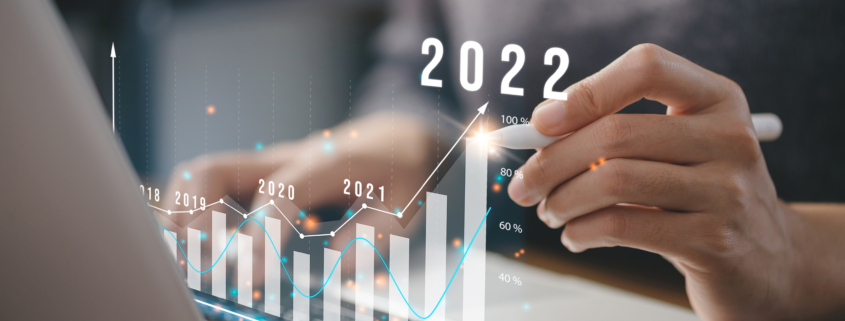Top B2B Ecommerce Trends for 2022
While many B2B verticals continue to employ physical and online sales channels, the extent to which they do so differs. In any case, digital is increasingly playing a key role in assisting B2B companies in growing and retaining their customer base. In 2020, the global B2B ecommerce market size was valued at USD 6.64 trillion and is expected to expand at a compound annual growth rate (CAGR) of 18.7% from 2021 to 2028. The biggest reason? Millennials. They not only expect, but demand a personalized ecommerce experience through streamlined, digital channels. In fact, 73% of millennials are involved in the B2B buying process. That’s huge. And this dynamic is driving many of the trends we are seeing.
B2C-like experiences are the Zeitgeist
Whether B2C or B2B, online behavior is driven through highly similar user expectations. The B2B buying process tends to take longer to play out and can involve multiple people, but at the end of the day the customer still expects an experience that is tailored to their needs. We all know that B2B buyers do a lot of pre-purchase research on a manufacturer and its products, just like B2C buyers do. In fact, they typically conduct at least ten online searches before making an order. Creating your B2B site with clear navigation and intuitive user journeys is no longer optional. As clients and prospects are in research-mode, those companies that enable easy access to critical product information are going to realize more success.
Your Margin for CX Error is Evaporating
Today’s customers have been conditioned to have limited tolerance for less than ideal Customer Experience. Nowhere is this more crucial than in your digital channels, as your competitors are a mere click away and they are making investments to grab your market share. Customer’s expect an intuitive customer experience online that enables them to find the products and content that they desire quickly and efficiently, and to feel like you know them. A growing percentage of Customer Loyalty has been replaced by consistency in Customer Experience. This is not a “one and done” fix, but needs to be an ongoing focus for your business in order to generate repeat business and maximize Life-Time Value. Mapping out your customer journeys by persona and identifying any friction points, then creating a CX improvement roadmap based on an impact / effort matrix are investments that will pay off many times over.
B2B Mobile Commerce is Critical to Get Right
Millenials and mobile…they go hand in hand. Literally! 50% of B2B queries now are made on smartphones. In fact, mobile drives over 40% of revenue in leading B2B companies. So getting your B2B business online is the first step, but making it mobile-friendly is important. The first step is putting yourself in the shoes of your customers and asking yourself, “what are the top five most important things we want our customers to do in a mobile environment?” You have limited screen “real estate”, so the features and functionality you offer will have to be prioritized and focused.
Launching a Direct-to-Consumer (DTC) Channel
DTC gives you more control and connection with your customers, but it’s a big challenge to implement. It’s also a big trend. A DTC channel opens up many new opportunities across the board. The benefits of direct-to-consumer (DTC) ecommerce are substantial. From a revenue perspective, DTC tends to have much higher margins. Developing an end-to-end relationship with your customer not only gives you greater control, but you also have access to more first-party data that can be utilized to make critical business decisions, as well as seeing a significant increase in repeat purchases and Life-Time-Value of customers. you own the end-to-end relationship and it’s an additional sales channel that tends to have much higher margins.
Smart manufacturers and brands are investing in their own B2B channel where they can further build direct relationships with their clients, have all the behavior data (upsells, subscriptions, bundled offerings). This also insulates their current clients from being exposed to competitive offerings by 3rd party marketplaces. In order to effectively execute a direct B2B channel you need the entire company bought into the benefits, including sales, client services / support, and product marketing.
It’s all about the content.
Cold calling, brochures, and catalogs are being phased out in favor of digital initiatives in the marketing world. B2B marketers will see high-quality leads coming from SEO, site content, emails, and virtual events, even as in-person events return.
According to a study conducted by the Content Marketing Institute and MarketingProfs, 90 percent of respondents used short articles/posts for content marketing in the previous year. Email newsletters, long-form articles, and podcasts all grew in popularity in 2021, and we expect this trend to continue in 2022.
During the year, in-person events lost the most, although virtual events also lost a few percentage points. This demonstrates how difficult it is for B2Bs to articulate their brands and create relationships through webinars. However, marketers have frequently failed to deliver the material that users desire. In 2022, content must demonstrate that vendors are aware of and capable of resolving issues.
Optimizing revenue
Customer acquisition, retention, and upselling are all goals of revenue optimization. It’s like customer retention on steroids: you want to implement techniques that help consumers stay longer and spend more money with you.
Marketing must retain a focus on existing clients as recurring revenue arrangements become more common. To enhance customer lifetime value, leaders should focus on maximizing LTV (Life-Time-Value) in the B2B channel by collaborating with both sales and customer success operations.
Making high-intent buyer personas is a good place to start when it comes to revenue optimization. Regardless of whether your sales staff is focusing on acquiring, keeping, or upselling clients, this ensures that your brand knows who your target consumer is and that you don’t waste time on low-quality leads.
Optimizing Investments
Many technology investments are the by-product of short-sighted tactics previously implemented that ultimately painted the company into a corner and saddled them with technical debt. Obviously some future requirements simply cannot be forecasted, but positioning your technical investments in a way that enables flexibility to adapt to future requirements is a paramount consideration that many companies undervalue in the short-term. It can be easier in the short-run to implement closed all-in-one platforms, but that comes at much higher cost down the road.
Savvy B2B technical buyers are looking for a blend of customizability, scalability, and flexibility to power their digital channels today, tomorrow and into the future. One of the trends that addresses this need is the growth of API-driven and open-API platforms that enable adaptability to future third-parties applications that enable non-native functionality to be effectively leveraged without requiring the equivalent of open-heart surgery that comes with a full replatform.
Companies are putting more emphasis on sustainability.
As worldwide awareness of climate change grows, more businesses are launching sustainability efforts. These objectives are not only good for the environment, but they are also good for business. Customers are 4.3 times more loyal to eco-friendly firms, according to surveys, and conversion rates can improve by up to 20%.
Finding ways to be more ecologically friendly, whether it’s through packaging, product materials, or reducing energy use in production, is a major trend.
Commerce in the social space
By 2025, social commerce sales are predicted to quadruple. In China, over half of internet users make purchases through social media platforms, compared to only 30% in the United States. In 2022, a big trend will be for businesses to be able to promote and sell things on social media so that customers can make purchases without ever leaving the platform.
Essentially, this allows B2B businesses to create an eCommerce store directly on social media platforms such as Facebook, Instagram, and Pinterest.
AI-driven personalization
Personalized experiences were a hot topic in 2021, but in 2022, we’re taking things a step further. Personalization will always be here, and the way companies approach it is changing.
Artificial intelligence will be a high priority in 2022.
In 2021, there was a global poll of consumers done to learn how they felt about various brand interactions. The findings: Consumers care less about the quantity or location of contact and more about whether the interactions are relevant. For example, 27 percent of respondents stated inconsistent brand messaging irritates them the most, while another 27 percent said irrelevant marketing irritates them the most.
Businesses had to shift priorities fast and work with fewer resources last year. When it comes to digital commerce technologies, B2B organizations value customization and flexibility (87 percent), according to the study. The demand for out-of-the-box B2B functionalities (65.2 percent) was not far behind.
B2Bs will be more aware of technology developments and how they fit into vendor product roadmaps in 2022. Technology leaders will seek solutions that will not only function for their company today but also adapt to changing markets and customer expectations in the future.
The metaverse strategy
In a nutshell, the metaverse is an online environment where humans interact with in a digital landscape through avatars. It’s as though the physical world had a virtual extension. Online games like Roblox and Fortnite are popular metaverse locations.
But, how does this relate to your B2B ecommerce business? Creating a location for your brand in the metaverse may not yet be at the top of your to-do list, but it is worth keeping on eye-on if you want to keep up with the ever-growing digital channels.
Company’s have the ability to improve brand awareness and engagement by establishing online venues for enterprises to check out things before they buy. The possibilities are unlimited, and as eCommerce technology develops and evolves, we’ll see even more possibilities emerge.
Summing up
The pandemic was still going strong in 2021. However, economies all across the world have proven to be resilient. Worker shortages and delivery delays wreaked havoc on many companies as the year progressed. Despite this, businesses and households continued to spend. As investment and value creation continue to rise, the business outlook remains overwhelmingly positive.
Many of the problems that plagued 2021 will persist in 2022. The epidemic, inflation, and supply chain issues will all continue to be a problem. However, demand is high and going to stay there. For those companies that embrace innovation and seize the opportunity, there is plenty of upside to be had.
Keep these B2B eCommerce trends in mind so you can start adopting them in Q1. Making sure you’re up to date on new marketing ideas and approaches keeps your company in front of clients’ minds.




